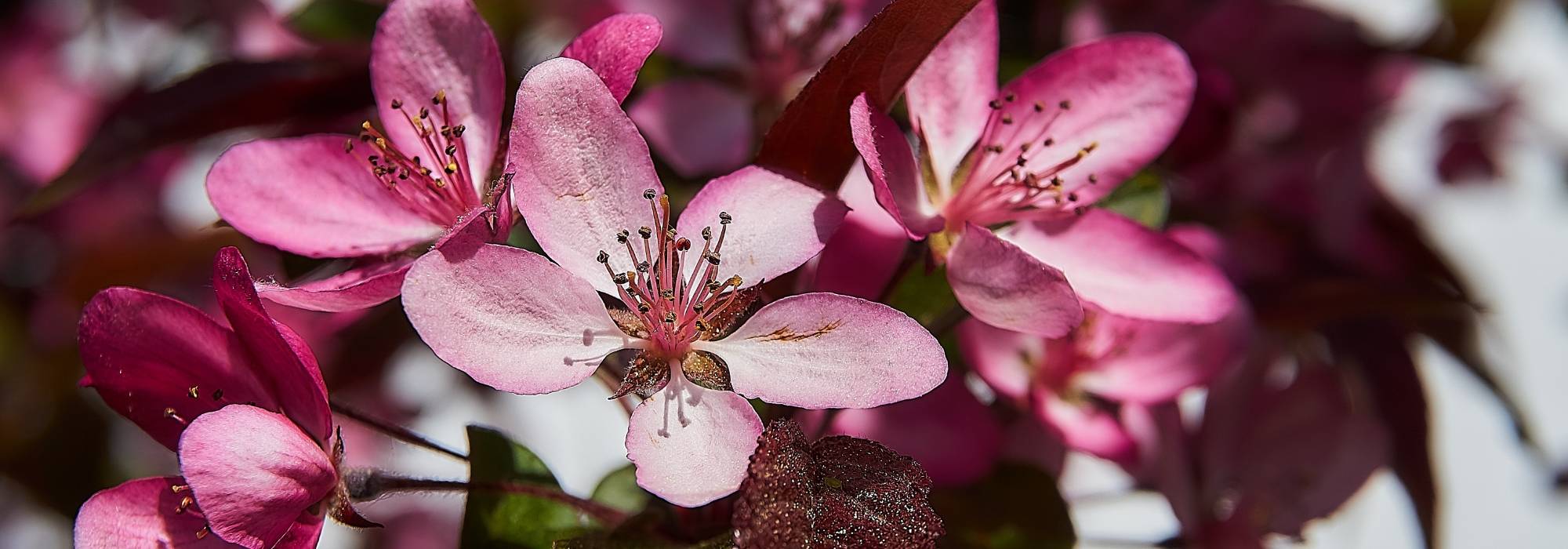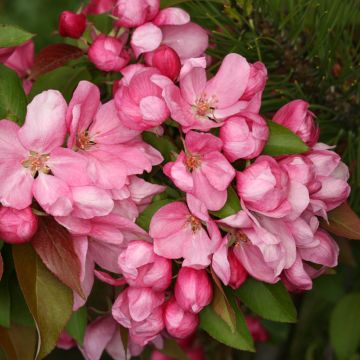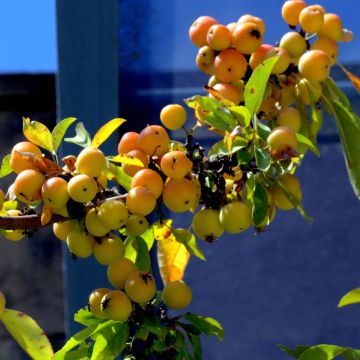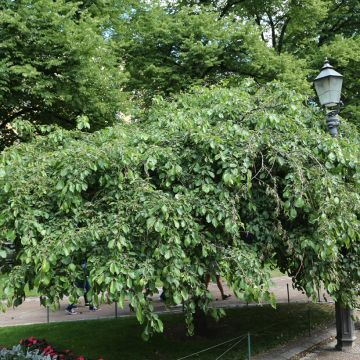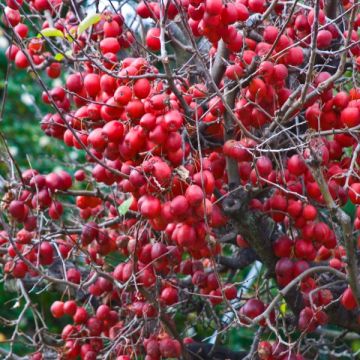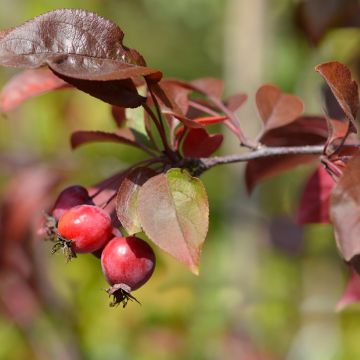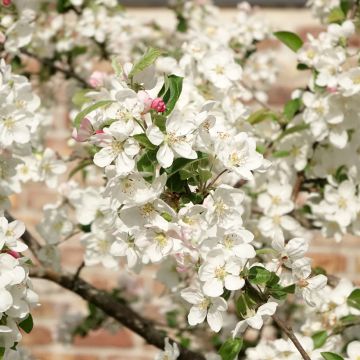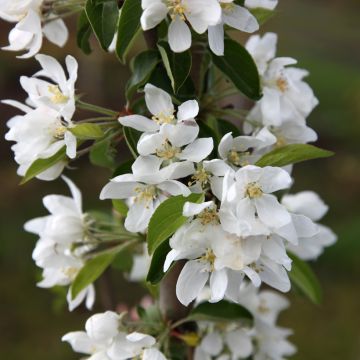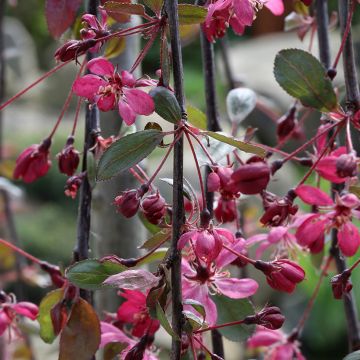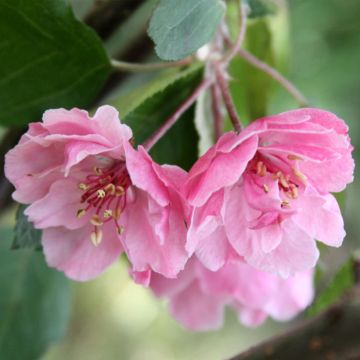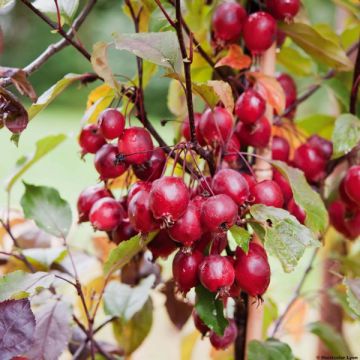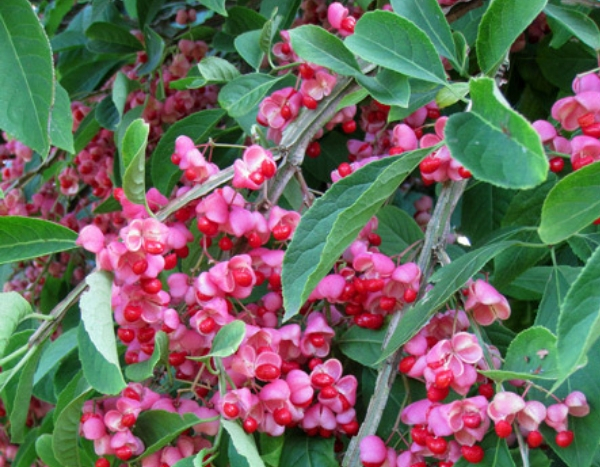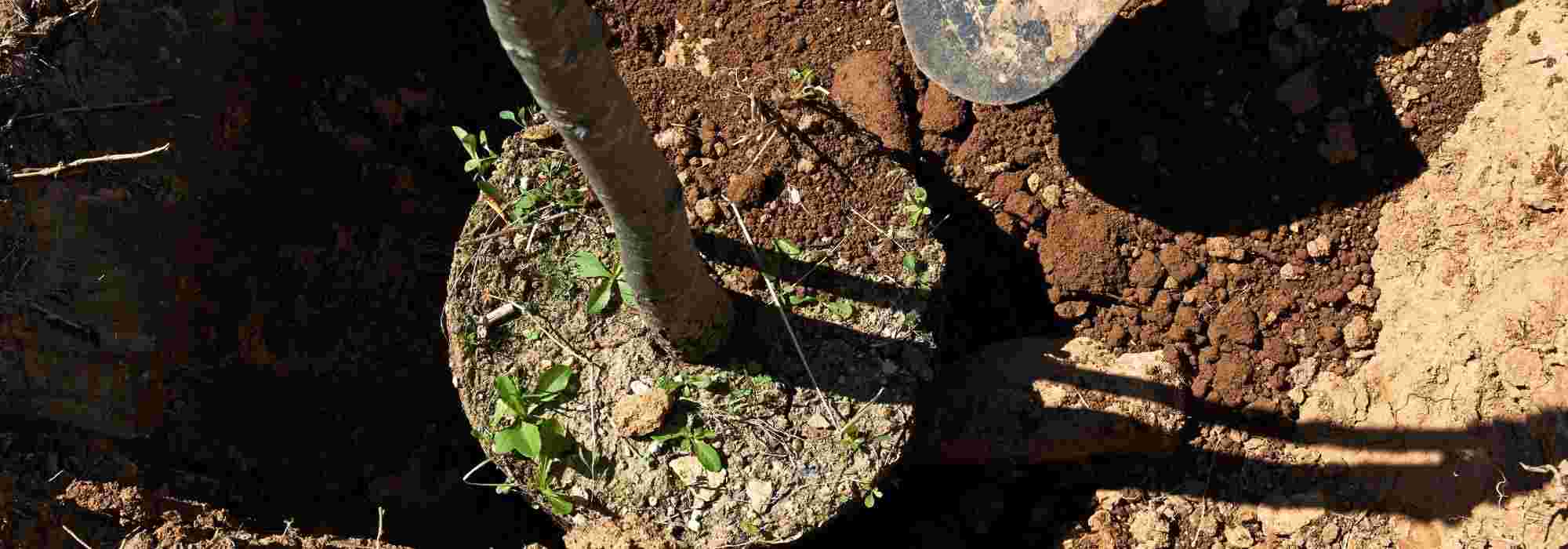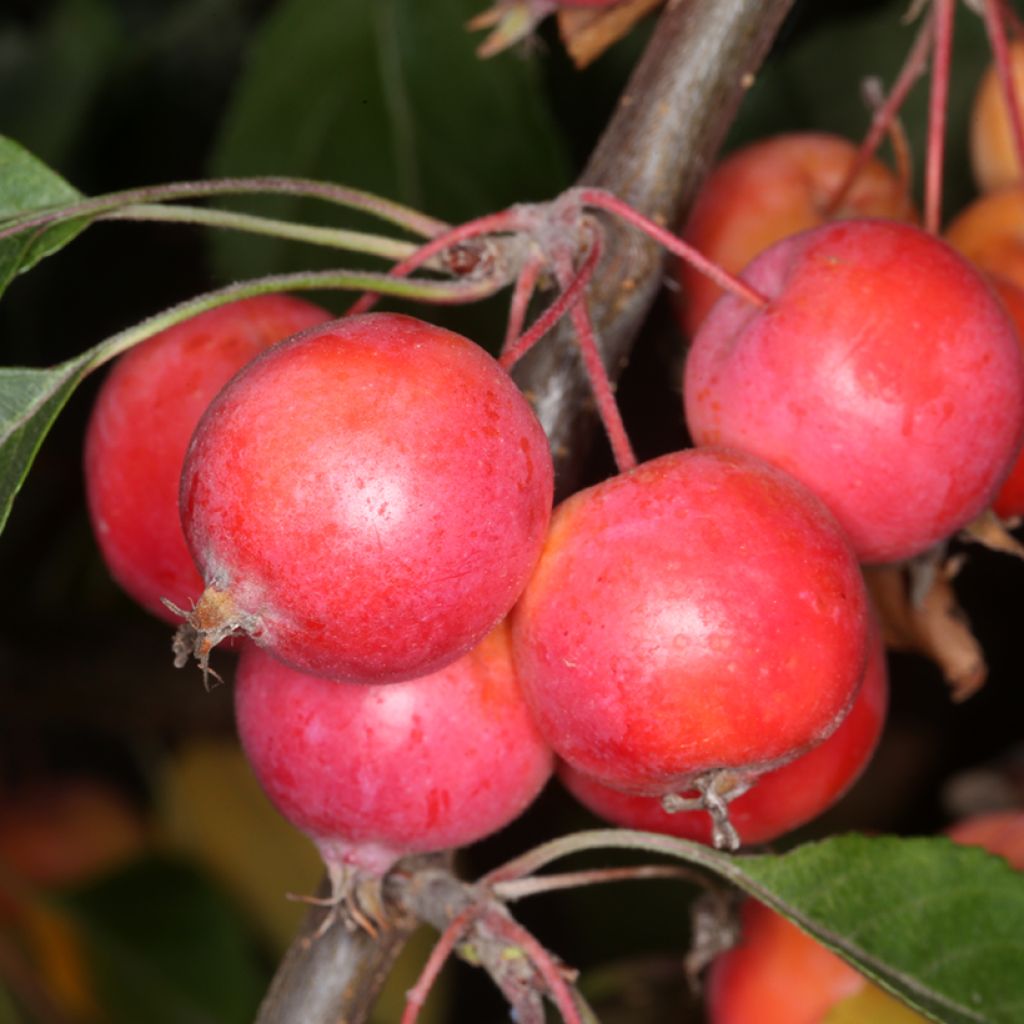

Malus astringens Hopa - Crabapple
Malus astringens Hopa - Crabapple
Malus sieversii f. niedzwetzkyana × baccata Hopa
Crabapple ornamental apple
Special offer!
Receive a €20 voucher for any order over €90 (excluding delivery costs, credit notes, and plastic-free options)!
1- Add your favorite plants to your cart.
2- Once you have reached €90, confirm your order (you can even choose the delivery date!).
3- As soon as your order is shipped, you will receive an email containing your voucher code, valid for 3 months (90 days).
Your voucher is unique and can only be used once, for any order with a minimum value of €20, excluding delivery costs.
Can be combined with other current offers, non-divisible and non-refundable.
Home or relay delivery (depending on size and destination)
Schedule delivery date,
and select date in basket
This plant carries a 24 months recovery warranty
More information
We guarantee the quality of our plants for a full growing cycle, and will replace at our expense any plant that fails to recover under normal climatic and planting conditions.
Would this plant suit my garden?
Set up your Plantfit profile →
Description
Malus x adstringens 'Hopa' is a pioneering ornamental apple tree, the origin of many excellent purple varieties, more resistant to scab. In spring, it is covered with carmine buds that open into large, single, bright pinkish-purple flowers. Its young shoots are also purple and at maturity, the leaves take on a more or less purple-green hue. In late summer, the tree produces beautiful small, bright blood orange fruits, which can be enjoyed until mid-October. It is a beautiful small tree with a spreading habit, suitable for planting as a specimen or in a mass planting.
The ornamental apple trees are derived from various botanical species of the genus Malus belonging to the Rosaceae family, which also includes fruit-bearing apple trees, as well as most of our fruit trees (pear trees, peach trees, plum trees...). Hardy, adaptable, and easy to grow, flowering apple trees can thrive in ordinary soil, but prefer deep, loose, and moist loam. Once established, they can tolerate neglect while maintaining their generous character. Numerous cultivars have been developed in Europe, as well as in the United States, becoming increasingly attractive and disease-resistant.
Malus x adstringens 'Hopa' was selected a little before 1920 by Niels Hansen, from the South Dakota Agricultural Experiment Station in the United States. This variety is the result of a cross between Malus sieversii f. niedzwetzkyana and M. baccata.
It is a small tree with a short trunk that bears a generally rounded crown, with a somewhat variable shape, and spreading branches. It will reach a maximum height of 5 to 6 m, with a spread of 3 to 4 m. Its young leaves, which appear at the same time as the flowering, are purple. This apple tree blooms in April-May, depending on the region and climate. Its carmine red flower buds open into single flowers, with a diameter of about 4-5 cm, and 5 petals. Their colour changes from purple to dark lilac pink and then to light lilac pink. They are nestar-rich and attract bees and other pollinators.
After pollination, fruits with a diameter of 2-3 cm are formed. At maturity, they have a beautiful bright orange colour tinged with red. These decorative fruits fall after mid-October. This very hardy apple tree can withstand temperatures as low as -25°C. However, it is susceptible to certain apple tree diseases such as scab.
Malus 'Hopa' will delight collectors of historical varieties who are not put off by treatments. This beautiful apple tree can be planted as a specimen on a lawn or incorporated into a mass planting where it will provide structure. To accompany it, you can choose, for example, a deciduous spindle tree like Euonymus planipes, which has magnificent autumn colours and decorative fruits, a Moyesii Geranium rose with beautiful cherry red single flowers followed by decorative bright orange fruits in autumn, and a 'Black Lace' elder with finely cut purple foliage adorned with pink umbels in spring. At the base of this apple tree, you can also plant perennial ground cover geraniums.
Malus astringens Hopa - Crabapple in pictures
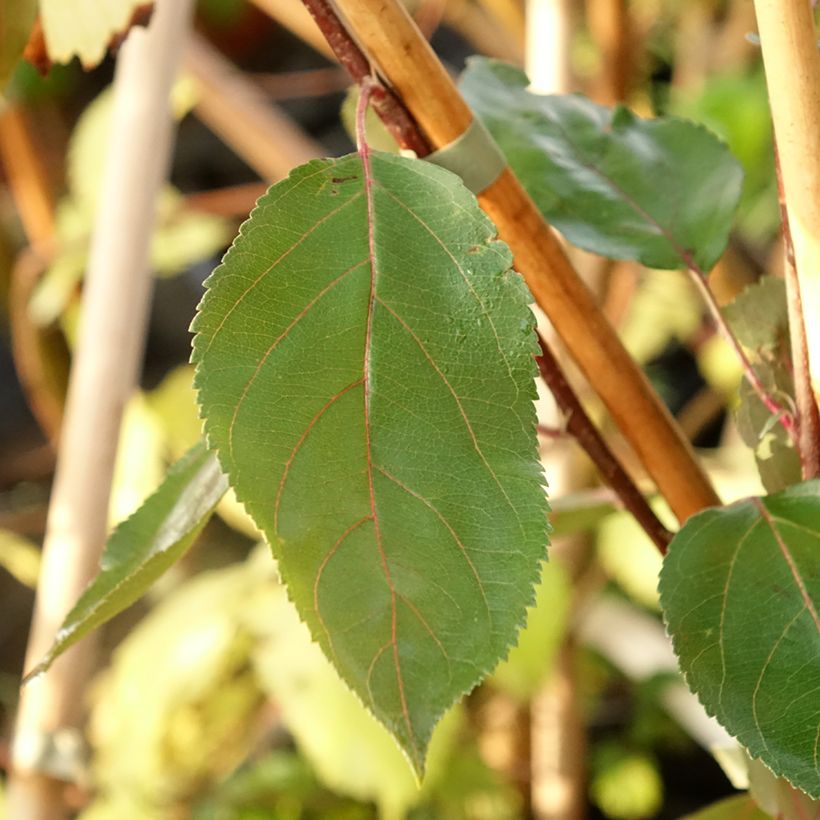

Plant habit
Flowering
Foliage
Botanical data
Malus
sieversii f. niedzwetzkyana × baccata
Hopa
Rosaceae
Crabapple ornamental apple
Malus xadstringens Hopa
Cultivar or hybrid
Other Malus - Crabapple
View all →Planting and care
Malus 'Hopa' requires a bright, sunny exposure and high-quality soil that is deep, loose, rich, and well-drained, remaining slightly moist in summer. It tolerates both limestone and slightly acidic soils if they are rich in humus. Dig a large planting hole. If your soil is poor, dig a generous planting pit, add plenty of good-quality compost, and apply fertiliser or compost at its base every spring.
After careful planting and accompanied by regular watering during the first two years, it will generally manage on its own but may suffer during hot and very dry summers. To allow it to reach its full potential, consider its mature size and give it enough space.
This apple tree is known to be susceptible to diseases. Use nettle manure to strengthen the foliage's resistance and, in case of an attack, apply Bordeaux mixture.
Planting period
Intended location
Care
Planting & care advice
This item has not been reviewed yet - be the first to leave a review about it.
Haven't found what you were looking for?
Hardiness is the lowest winter temperature a plant can endure without suffering serious damage or even dying. However, hardiness is affected by location (a sheltered area, such as a patio), protection (winter cover) and soil type (hardiness is improved by well-drained soil).

Photo Sharing Terms & Conditions
In order to encourage gardeners to interact and share their experiences, Promesse de fleurs offers various media enabling content to be uploaded onto its Site - in particular via the ‘Photo sharing’ module.
The User agrees to refrain from:
- Posting any content that is illegal, prejudicial, insulting, racist, inciteful to hatred, revisionist, contrary to public decency, that infringes on privacy or on the privacy rights of third parties, in particular the publicity rights of persons and goods, intellectual property rights, or the right to privacy.
- Submitting content on behalf of a third party;
- Impersonate the identity of a third party and/or publish any personal information about a third party;
In general, the User undertakes to refrain from any unethical behaviour.
All Content (in particular text, comments, files, images, photos, videos, creative works, etc.), which may be subject to property or intellectual property rights, image or other private rights, shall remain the property of the User, subject to the limited rights granted by the terms of the licence granted by Promesse de fleurs as stated below. Users are at liberty to publish or not to publish such Content on the Site, notably via the ‘Photo Sharing’ facility, and accept that this Content shall be made public and freely accessible, notably on the Internet.
Users further acknowledge, undertake to have ,and guarantee that they hold all necessary rights and permissions to publish such material on the Site, in particular with regard to the legislation in force pertaining to any privacy, property, intellectual property, image, or contractual rights, or rights of any other nature. By publishing such Content on the Site, Users acknowledge accepting full liability as publishers of the Content within the meaning of the law, and grant Promesse de fleurs, free of charge, an inclusive, worldwide licence for the said Content for the entire duration of its publication, including all reproduction, representation, up/downloading, displaying, performing, transmission, and storage rights.
Users also grant permission for their name to be linked to the Content and accept that this link may not always be made available.
By engaging in posting material, Users consent to their Content becoming automatically accessible on the Internet, in particular on other sites and/or blogs and/or web pages of the Promesse de fleurs site, including in particular social pages and the Promesse de fleurs catalogue.
Users may secure the removal of entrusted content free of charge by issuing a simple request via our contact form.
The flowering period indicated on our website applies to countries and regions located in USDA zone 8 (France, the United Kingdom, Ireland, the Netherlands, etc.)
It will vary according to where you live:
- In zones 9 to 10 (Italy, Spain, Greece, etc.), flowering will occur about 2 to 4 weeks earlier.
- In zones 6 to 7 (Germany, Poland, Slovenia, and lower mountainous regions), flowering will be delayed by 2 to 3 weeks.
- In zone 5 (Central Europe, Scandinavia), blooming will be delayed by 3 to 5 weeks.
In temperate climates, pruning of spring-flowering shrubs (forsythia, spireas, etc.) should be done just after flowering.
Pruning of summer-flowering shrubs (Indian Lilac, Perovskia, etc.) can be done in winter or spring.
In cold regions as well as with frost-sensitive plants, avoid pruning too early when severe frosts may still occur.
The planting period indicated on our website applies to countries and regions located in USDA zone 8 (France, United Kingdom, Ireland, Netherlands).
It will vary according to where you live:
- In Mediterranean zones (Marseille, Madrid, Milan, etc.), autumn and winter are the best planting periods.
- In continental zones (Strasbourg, Munich, Vienna, etc.), delay planting by 2 to 3 weeks in spring and bring it forward by 2 to 4 weeks in autumn.
- In mountainous regions (the Alps, Pyrenees, Carpathians, etc.), it is best to plant in late spring (May-June) or late summer (August-September).
The harvesting period indicated on our website applies to countries and regions in USDA zone 8 (France, England, Ireland, the Netherlands).
In colder areas (Scandinavia, Poland, Austria...) fruit and vegetable harvests are likely to be delayed by 3-4 weeks.
In warmer areas (Italy, Spain, Greece, etc.), harvesting will probably take place earlier, depending on weather conditions.
The sowing periods indicated on our website apply to countries and regions within USDA Zone 8 (France, UK, Ireland, Netherlands).
In colder areas (Scandinavia, Poland, Austria...), delay any outdoor sowing by 3-4 weeks, or sow under glass.
In warmer climes (Italy, Spain, Greece, etc.), bring outdoor sowing forward by a few weeks.






























